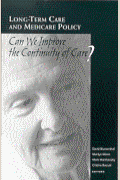In addition to banning the actual development of nuclear weapons, the Joint Comprehensive Plan of Action (JCPOA) prohibits Iran from working with many of the technologies that would be essential for building a nuclear weapon. And while there are robust verification measures in place to confirm the former, there has been some recent debate over the international community’s ability to fully verify the latter. The debate is particularly salient as the congressionally mandated deadline for President Trump to re-certify the deal approaches on October 15.
Although there is some merit to the criticisms, they are exaggerated. The associated provisions of the JCPOA give the IAEA the ability to demand access where evidence of Iranian cheating is found, with a lower burden of proof of illicit nuclear intent, and the threat of sanctions snap-back gives Iran motivation to comply with access requests.
What is Section T?
The argument centers on Section T of the JCPOA, which provides that Iran will not design, develop, acquire, or use computer models to simulate nuclear explosive devices, or multi-point explosive detonation systems suitable for a nuclear explosive device (unless approved by the Joint Commission), or explosive diagnostic systems (again, unless approved), or explosively driven neutron sources or specialized materials for explosively driven neutron sources.
Put in laymen’s terms, Iran essentially agreed to not engage in a variety of activities that would permit it to design and evaluate a nuclear warhead. As some of these activities also have limited non-nuclear weapons design applications, there is the possibility of specific permission being granted for individual cases. But, the general principle is that these activities are so intrinsically important for nuclear weapons that they ought to be prohibited outright. Notably, this section has no expiration and, as such, JCPOA proponents have often cited it as one of the ways in which the JCPOA will have salience even after primary nuclear restrictions ease 10 to 15 years after implementation began in 2016.
Amano’s “admission”
Some, however, have questioned whether the IAEA has sufficient knowledge to enforce the terms of Section T, and a recent comment by Director General of the International Atomic Energy Agency (IAEA) Yukiya Amano added fuel to the fire.
On September 26, Amano acknowledged in an interview with Reuters that, “our tools are limited” when it comes to verifying Section T. He went on to say: “In other sections, for example, Iran has committed to submit declarations, place their activities under safeguards or ensure access by us. But in Section T I don’t see any [such commitment].” He then suggested that this is an area where additional guidance from the Joint Commission (which is composed of the states that negotiated the JCPOA as well as Iran) would be appreciated.
Critics of the JCPOA have latched on to the comment, suggesting that it proves the inadequacy of the JCPOA to guard against Iran’s nuclear weapons program.
The most sober of these arguments is that, as Amano implied, it is difficult for the IAEA to carry out its responsibilities under Section T without a baseline declaration by the Iranians of the places in which any such equipment is being stored as well as the uses to which it is being applied. The argument flows that, if a declaration existed, the IAEA could visit the sites in question, confirm that they are not being used for nuclear weapons research, and inform JCPOA participants of its analysis. Others have gone farther, arguing that—taken in combination with generalized Iranian reluctance to provide access to its military sites—the Iranians could very well be working on nuclear weapons at this very time.
More light than heat
But this is alarmist and exaggerated: In fact, Amano’s statement simply underscores the inherent difficulty of negotiating any kind of arms control agreement between adversaries, particularly in as inherently politicized an environment as that facing the JCPOA.
That’s not to say that this element of the JCPOA and its verification system is perfect. A declaration of equipment covered by Section T and associated inspection system would be a valuable way of providing additional confidence as to the absence of nuclear weapons-related work in Iran. Iran’s longstanding obfuscation about its weapons program and refusal to admit the existence of such a program (at least up until 2003-2004, when the U.S. intelligence community believes the program was suspended) has raised reasonable questions not only as to how close to nuclear weapons Iran has gotten but also as to the future intent of its nuclear program. Given that some nuclear restrictions will start to ease within the decade and that extraordinary transparency steps will end in 2040, it would be useful for non-Iranians and presumably helpful for Iranians to disabuse those skeptical of their intentions of their concerns.
However, Amano never said that he is unable to verify Iran’s commitments in Section T. Rather, he said that his tools are limited and that his job could be made easier with an Iranian declaration. This may be true, but that does not detract from the fact that, in the event of indications of illicit work involving these items, the IAEA maintains the responsibility and the right under the deal to demand access to relevant facilities.
It is worth noting, in this context, that the broad nature of the Section T prohibition helps: Unlike centrifuge R&D or work with specialty metals that might have an application for the missile program (which is outside of the JCPOA), there is no accepted use of these items or technologies that does not involve Joint Commission approval. For this reason, any indication that they’re involved in ongoing Iranian research activities would be a material breach of the JCPOA—and given the subject matter, a highly significant breach at that.
This also means that confronting Iran over evidence that this work is ongoing is a simpler proposition: It would be limited only by the need to protect intelligence sources and methods, not questions over Iranian intent or research scope. Speaking as someone who has had to confront foreign governments over Iranian nuclear activities in the past, this is an incredibly useful distinction.
To be sure, this means that evidence would have to be found suggesting illicit work, thus prompting inspections, rather than inspections taking place regularly. To me, as an advocate of the JCPOA, regular inspections would be reassuring (though not dispositive). But would some of the same JCPOA skeptics now seizing on this matter be that much more comforted by regular IAEA inspections? After all, one of the primary complaints around the JCPOA is that inspections are themselves insufficient because Iran would naturally engage in its covert work outside of the careful watch of the IAEA. Even the argument that Iran would be unable to procure this equipment from abroad (which of course remains a key JCPOA provision) is apparently of little aid, as some of these same skeptics have also argued that the invasive process of review and approval of Iranian procurement activity does not go far enough. Given all of this, I find it doubtful that even regular declarations and IAEA access would soothe the worries of those opposed to the JCPOA in principle.
A similar point can be made with respect to the red herring issue of access to Iranian military sites. To be sure, Iran could be using military sites to house such goods but it is highly unlikely that the Iranians would use just any military site. Moreover, it’s not even essential that they use a defined “military” site. JCPOA skeptics may say that they want blanket permission for inspectors to access military sites, but they do not mean it in practice (and would probably scoff at a strawman argument that they are insisting on inspector access to random mess halls in Mashad). Even they, while appealing for a general agreement to inspector access “anytime, anywhere,” would push for searches on the basis of evidence of illicit conduct. The issue at hand is whether access to suspect sites—military or otherwise—would be possible if indications arose that such access was necessary. This is precisely what the JCPOA already affords.
Show me the evidence
Even without IAEA inspector access, the topic of Iranian weaponization remains one of the most central areas of intelligence collection and inquiry. The United States has focused on trying to identify whether Iran is developing nuclear weapons for decades, and the kinds of equipment and activities covered by Section T are of particular interest. Thus far, U.S. intelligence has been able to identify both illicit Iranian activities and the Iranian decision in 2003-2004 to terminate its nuclear weapons program, an analytic judgment that has yet to be adjusted since it was first made in 2007. Based on press reports, the United States does not possess—or, at the very least, has not presented to the IAEA and U.S. partners—information to suggest that Iran is in fact cheating on Section T.
It could be that U.S. intelligence is just missing a crucial piece of data or it could be that no such data exists, but herein lies one of the biggest problems with critics focused on Section T: inference becoming evidence. Leaping to a conclusion of a violation based on past Iranian behavior is deeply problematic, but that is a real risk at the present time. On October 3, Senator Tom Cotton gave a speech in which he noted: “If Iran doesn’t have a covert nuclear program today, it would be the first time in a generation.” For a U.S. Senator to ask a good faith question about U.S. confidence in Iranian compliance is wholly justified and in his job description, but to make policy on the basis of hypothetical and far from imminent threat is a far riskier proposition.
For this reason, though implementation of Section T could be different, the central question ought to be whether on balance it and the JCPOA structure give the international community the tools it needs to identify and respond to Iranian nuclear weaponization efforts. Prior to the JCPOA, we were reliant on intelligence collection with no way of enforcing Iranian compliance with inspection requests. Under the JCPOA, intelligence collection and the threat of snap-back give the United States and our partners the ability to demand IAEA access where evidence of cheating is found. This is a material improvement over the previous situation.
The Brookings Institution is committed to quality, independence, and impact.
We are supported by a diverse array of funders. In line with our values and policies, each Brookings publication represents the sole views of its author(s).












Commentary
Preventing Iranian nuclear weapons work
October 9, 2017